Android in 2015: Bringing 'pure Google' to every screen
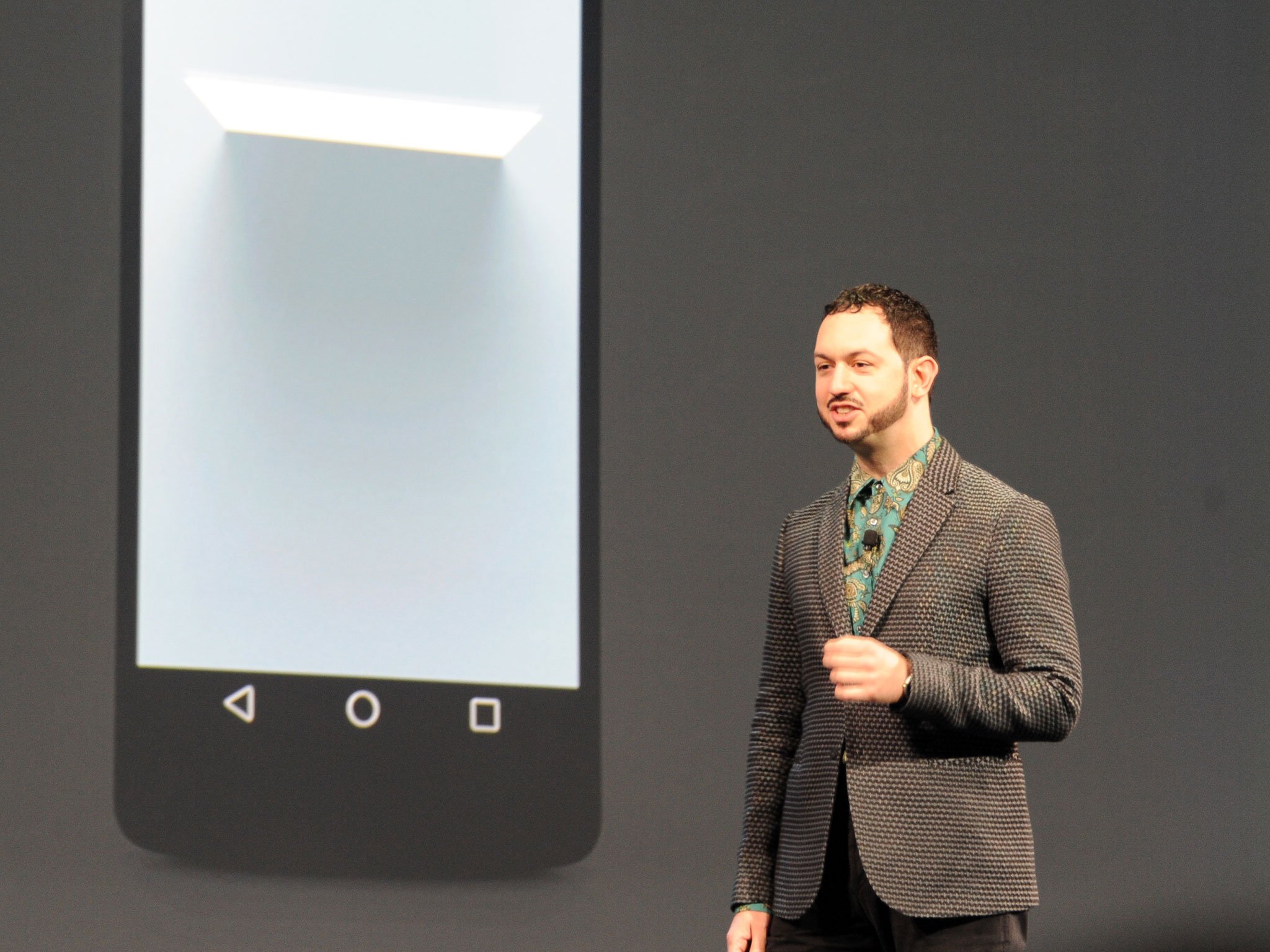
In the next year, Google wants to bring a single, consistent user experience to every screen you own — and Android is a central part of that plan
This year's Google I/O developer conference was a massively Android-centric affair. The OS dominated the two-and-a-half-hour keynote presentation, which saw a new platform version — Android "L" — previewed to developers, alongside new form factors in Android Wear, Android Auto and Android TV.
After three years of the "Holo" visual style (yes, it's been that long), Google introduced a new design language called Material Design. The move is as significant for Google as the switch from iOS 6 to 7 for Apple, or Aero to Metro for Microsoft — not least because the new design language will pervade every screen on which users view Google's services. Needless to say, that's a lot of screens.
With Material Design, stock Android becomes much more than a bare foundation for OEMs to built atop. It's a visual style intended to present Android as a Google product with a matching personality, same as Chrome OS and Google web services. So it's fitting that as Google prepares this new design language, it's also exerting more control over Android devices, ensuring consumers actually get to see it.
Read on to find out how Google's going to repeat its Chromebook strategy in new product categories to bring "Google experience" software to a wider audience, and how it could leverage its strength in mobile to address one of Chrome OS's greatest weaknesses.
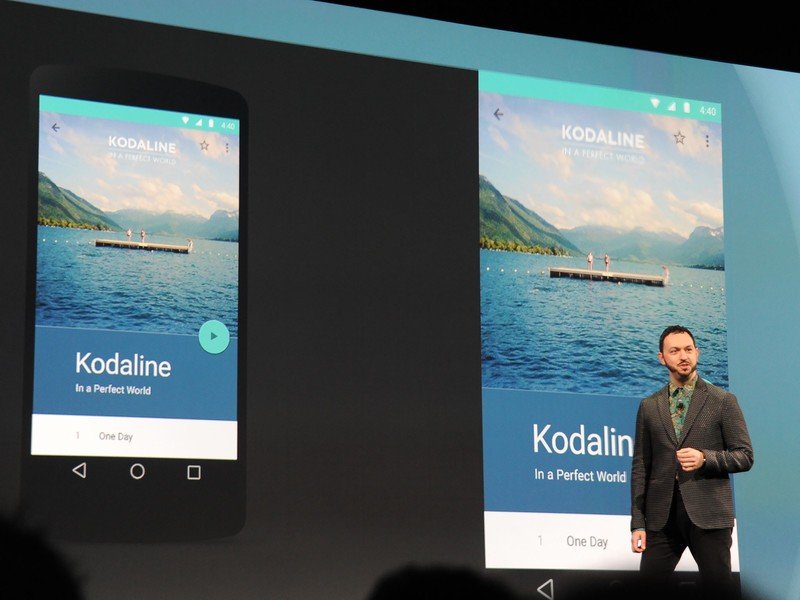
Matias Duarte - Google Vice President of Design
Putting Material Design in more hands
A new design language and lofty cross-platform goals are all well and good, but none of that matters if Material Design is obfuscated by the design whims of random hardware manufacturers. That's one of the reasons we've started to see Google claw back some control over how Android is presented to users, particularly in new device categories like smartwatches and set-top boxes.
Get the latest news from Android Central, your trusted companion in the world of Android
With Android TV and Android Wear, Google basically farms out hardware duties to partners while maintaining almost total control over the software experience — neither Wear nor TV allows the use of OEM "skins". This approach mirrors what Google has done with its Chromebook line — it manages and updates the user-facing software, the OEM worries about the hardware. Given that Android lead Sundar Pichai ran Chrome before also taking responsibility for Google's mobile OS, perhaps it's not surprising to see a Chromebook-like strategy being adopted for Android smartwatches and TVs.
Google-controlled software on watches, TVs and 'Silver' phones means faster updates and better security.
There are two significant advantages to this approach. First, it allows Google's new and important Material Design language to shine through, unencumbered by manufacturer bloat. Secondly, with software updates for Android Wear and Android TV coming straight from Google, the company eliminates one of the major pain points of Android device ownership. As we've discussed previously, pushing out updates to traditional "skinned" Android devices is a convoluted process involving Google, chipmakers OEMs and carriers. If Google calls the shots directly, the road to release becomes both shorter and smoother. There are fewer cooks in the kitchen.
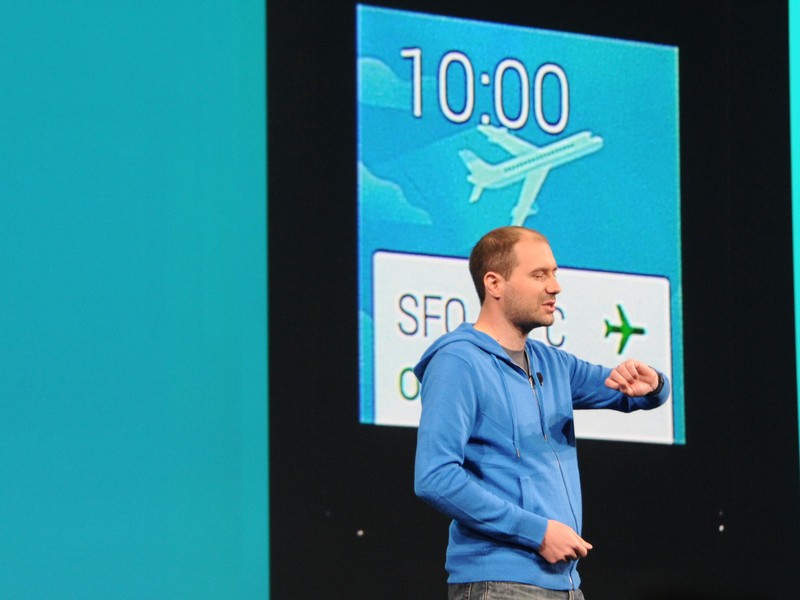
David Singleton - Android Engineering Director
The Chromebook-like approach also has security advantages. Adrian Kingsley-Hughes' oft-quoted condemnation of Android as a toxic hellstew of vulnerabilities is hyberbolic, but not completely baseless. There are phones barely a year old that may never get the Heartbleed fix, or any other number of important security patches. If the code comes straight from Google, users won't have to wait anywhere near as long for important OS updates, and there should be less disparity between Android versions running across the range of Wear and TV devices.
Does this make Android less open? Maybe. And we've heard nothing official on any AOSP (open-source) release plans for Android Wear just yet — though that's not to say it won't happen. Clearly there's a balance to be found between maintaining an open-source operating system and allowing manufacturer partners to ride roughshod over your platform. For Android Wear and Android TV, Google's edging on the side of control in order to serve its ecosystem needs, and deliver what it believes is the best experience to users.
What's more, there are signs that some Android phones may be moving in a similar direction.
Google's approach to Android Wear and Android TV mirrors its Chromebook hardware strategy.
"Android Silver", the rumored line of high-end "stock" Android handsets said to be coming in early 2015, wasn't anywhere to be seen at year's I/O conference. But given the volume of information on it coming from multiple sources, "Silver" is a rumor to be taken seriously. Read between the lines of recent comments from Android Engineering Director Dave Burke, and it's hard not to come away with the impression that Android Silver is in fact a thing.
Speaking to ReadWrite at Google I/O, Burke suggests Android Silver won't succeed the Nexus device program as some have claimed. But Silver as we currently understand it — essentially a mass-market, carrier-approved version of the Google Play editions program, with specialized hardware designed in partnership with Google — would slot perfectly into the company's new vision for Android across many screens. Like Wear, TV and Chromebooks, you'd have hardware from multiple manufacturers, with Google-controlled software and fast updates.
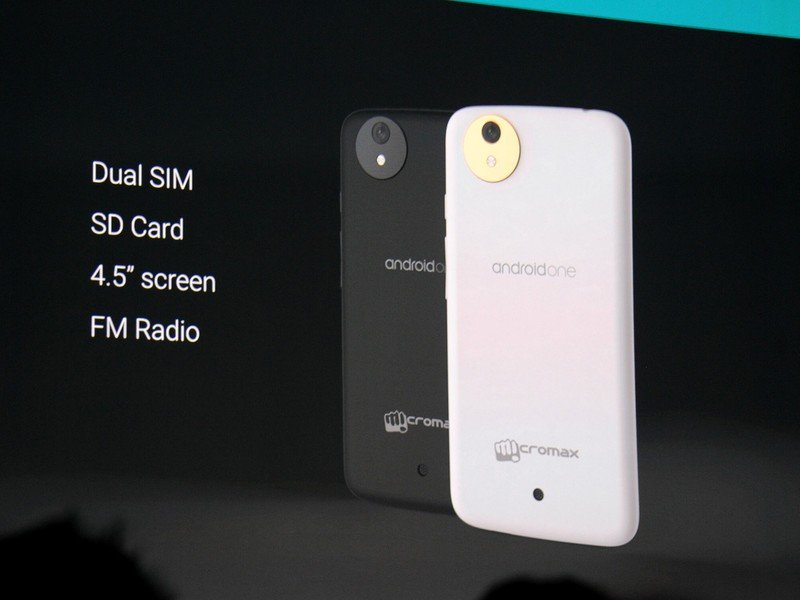
Aside from the rumored "Silver," the very real Android One endeavor sees Google directly managing the software on this new line of stock Android devices for emerging markets. Traditional "skinned" Android phones aren't going anywhere, of course, but nevertheless Google seems to be carving out a space for handsets with Google-managed software at both the high and low ends of the smartphone market.
Seasoned Android followers will note that we've been moving in this direction ever since the first rumors of multiple Nexus phones. Now, between Android Wear, Android TV, Android One and possible Android Silver handsets, we're seeing the beginnings of a strong stable of "pure Google" Android products — devices with software Google can update directly.
Android on your Chromebook
Another fascinating but underdiscussed development out of this year's I/O keynote was the arrival of Android apps on Chrome OS. On the surface, running Android apps on a Chromebook seems like a novel way to bring familiar mobile experiences like Vine and Flipboard to a larger screen. But this functionality shouldn't be dismissed as a gimmick — it's a powerful tool Google could use to bridge a big functionality gap.

Don't underestimate the importance of Android apps coming to Chromebooks.
Right now, as a general rule, if it's not available as a web app you can't run it on a Chromebook. Sure, some Chrome apps are available in offline mode, but the OS is online-centric and browser-driven by design. That's less of a barrier to entry now than when the first Chromebooks shipped three years ago. Nevertheless, it's an impasse to broader Chromebook adoption, and Google surely is aware of this. Bringing Android apps to Chrome OS addresses this weakness in Google's desktop presence by leveraging its strength in mobile applications.
The apps demonstrated at the I/O keynote were effectively phone or tablet versions displayed in a fixed window on a Chromebook. However it's not too far-fetched to imagine that, with time, these Chrome-based Android apps might become indistinguishable from the kinds of full-screen, high-powered, resizeable programs we use on Macs and Windows PCs today. In the years ahead, the Google Play Store could become as important a destination for Chromebook apps as it is today for phone and tablet content. In essence, it could provide Google a shortcut to a full-blown desktop app ecosystem.
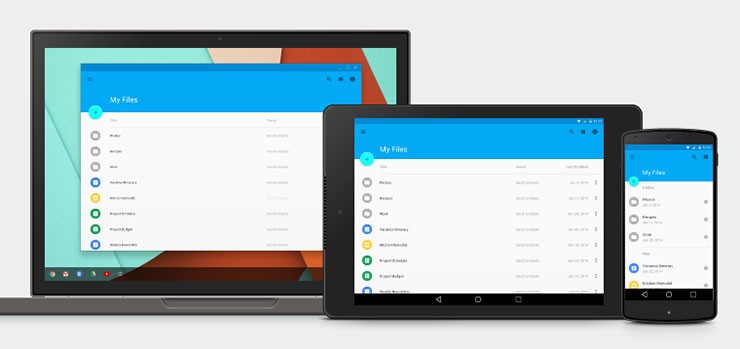
Google may have found a shortcut to a full-blown desktop app ecosystem.
We don't yet know the technical details of how Android apps will work on Chrome OS, but the demo apps shown during the keynote seemed to be running natively on the Intel-based Chromebook Pixel. If Google can fulfill Sundar Pichai's keynote promise to make apps work on Chrome OS with "as little modification as possible," it could open up these inexpensive laptops to a new world of productivity and entertainment possibilities not available on current Chromebooks. And if that happens, look for Chrome OS to become a much more plausible challenger to Windows and OS X for the majority of consumers, not just those needing a laptop for lightweight web-based tasks.
None of this is going to happen overnight. But assuming Google is playing the long game here, this has to be the company's end goal for Android apps on Chromebooks — to plug functionality gaps that can't be filled by web apps, even if the Chrome browser remains the core focus of Chrome OS.
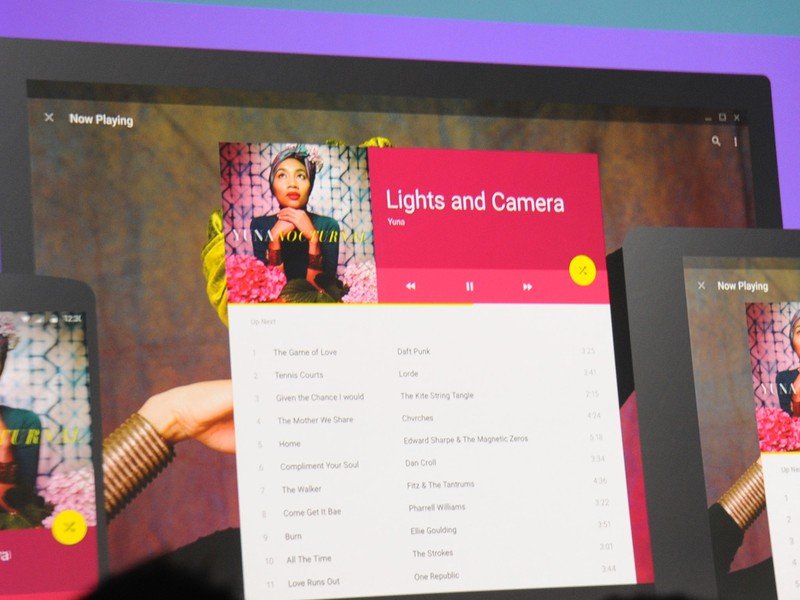
The road ahead
Google I/O 2014 revealed Google's vision for Android on just about every computing device you own — whether it's a phone, tablet, television, watch, car or laptop — with a consistent design language across each screen. In 2015 and beyond, Android and Material Design will take their place at the heart of almost every Google hardware endeavor of any significance. And as it does so, the new Chromebook-inspired approach to Android hardware will ensure that Google's new design language is seen by more users than ever before, and that those users are kept up to speed with OS updates. As for Chromebooks themselves, time will tell whether we'll see a slow trickle of select Android apps on that platform, or whether the floodgates will be opened on a world of powerful new apps for Chrome OS.
The yearly cycle of new phones and tablets will continue, with Android L, 64-bit processors and the new ART runtime sure to take next year's Android flagships to new heights in speed and performance. And we're eager to see how the major OEMs adapt their own UIs to take into account the rules of Material Design. One thing's for sure — in 2015, smothering Google's design work beneath a slow, ugly skin will become even less acceptable than at present.

Avni Shah - Director of Product Management, Chrome
The L Preview puts early code in the hands of OEMs and chip makers, not just app developers.
We're also seeing signs of hope when it comes to keeping existing devices up to date with fresh software. Of course on Nexus, Google Play edition, Android Wear, Android TV, Android One and (eventually) Android Silver devices, updates are basically a non-issue. But the release of an early developer preview for Android L — including source code — gives OEMs a head-start too. "Once we make the preview available we don't have to be as secretive," said Dave Burke at the I/O 2014 Android fireside chat, "so we can share builds, we can share more source with silicon vendors." Burke also suggested that this year's L developer preview represents the shape of things to come for future Android versions — "we shall continue doing it most likely, possibly, not promising, but yes."
Later in 2014 we'll enter the third age of Android — the first being the mess that was the platform before Ice Cream Sandwich, the second being the maturing process that followed through Jelly Bean and KitKat. This third-generation Android is more than just a mobile OS. Through it, Google will attempt to do for the television, automotive and wearable computing spaces what the smartphone revolution did for cellphones. And it'll do so while maintaining greater control over the user experience — and the update process — than ever before.
Time will tell how much of a success this will be. The major competitor in all these new computing frontiers is the almighty Apple — a giant in mobile, and widely rumored to have smartwatch and TV ambitions of its own.
But the platform is mature, and its reach is growing. However things pan out, 2015 is going to be a very interesting year for Android.

Alex was with Android Central for over a decade, producing written and video content for the site, and served as global Executive Editor from 2016 to 2022.
